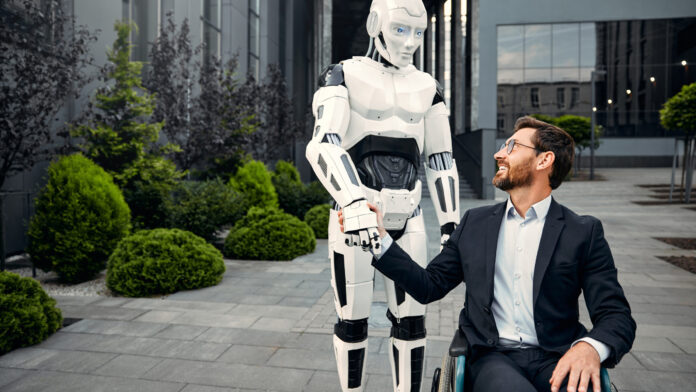As the boundaries between man and machine continue to blur, the science of robotics is undergoing a profound shift. For decades, robots have been hard, rigid and mechanical, built to repeat tasks with precision in controlled environments like factories. But a new generation of robots is emerging, one that trades metal for flexibility, circuits for softness, and rigidity for adaptability. These are soft robots, and they are redefining how humans interact with machines.
Soft robotics draws inspiration from nature. Octopus arms, caterpillars, human muscles and tendons all demonstrate the power of flexible, compliant motion. By mimicking these biological systems, engineers are creating machines that can bend, stretch and squeeze their way into environments previously inaccessible to traditional robots. These soft machines are not just novel. They are necessary. As robotics enters homes, hospitals and the human body
itself, it must become safer, gentler and more intuitive.
One of the most promising areas for soft robotics is healthcare. Surgeons are already using soft robotic instruments that can navigate delicate tissues during minimally invasive procedures. These devices can change shape, respond to pressure and even self-heal after damage. Soft robotic exosuits, designed to support weakened muscles or assist with rehabilitation, are being developed for patients recovering from strokes, spinal injuries or age-related degeneration. Because they conform to the body and move with it naturally, these devices are far more comfortable and user-friendly than rigid alternatives.
In assistive technology, soft robots are offering new hope to people with disabilities.
Researchers are building soft robotic gloves that help individuals regain the ability to grip objects. Others are developing wearable robotic skins that respond to movement and enhance human strength or mobility. These technologies are not about replacing human function but extending and restoring it. They reflect a new philosophy of design where machines adapt to
people, not the other way around.
The manufacturing sector is also beginning to adopt soft robotics, especially in environments where delicate handling is crucial. Food packaging, electronics assembly and pharmaceutical handling all require machines that can grasp soft, irregular or sensitive items without damaging them. Soft grippers made from silicone or elastomers can hold objects as fragile as fruit or as small as microchips, bringing both precision and versatility to industrial settings.
In space exploration and disaster response, soft robots have unique advantages. Their ability to deform and compress allows them to navigate rubble, tight crevices or unstable terrain.
NASA has funded research into soft robots that can move like worms or snakes, adapting to environments where wheels or legs would fail. These same principles could be used for planetary exploration or search and rescue missions in earthquake zones.
Despite the progress, soft robotics faces significant challenges. The materials used must be both durable and responsive, capable of withstanding repeated use without losing their form. Powering and controlling soft robots remains complex, as traditional motors and batteries are often too bulky or rigid. Researchers are exploring new forms of actuation, including
pneumatic systems, shape-memory alloys and even hydraulic fluids embedded within soft bodies. Sensor integration is another frontier. Unlike rigid machines that use fixed sensors, soft robots need flexible, stretchable sensors that can provide real-time feedback about pressure, position and environment.
The field is inherently interdisciplinary. Chemists, material scientists, engineers, computer scientists and biologists must work together to unlock the full potential of soft robotics.
Advances in artificial intelligence and machine learning are playing a crucial role in allowing soft robots to learn from interaction and adapt their behavior. The result is a new kind of machine intelligence that is not only reactive but also context-aware and cooperative.
In Sri Lanka, where industries such as apparel, agriculture and healthcare are labor-intensive, soft robotics could offer both economic and social benefits. Low-cost soft robotic systems could enhance productivity in small and medium enterprises or assist in elder care for a rapidly aging population. Collaboration between local universities, startups and global research institutions could help bring this technology within reach of developing economies.
The promise of soft robotics lies not just in its technical capabilities but in its cultural shift. It represents a move away from domination by machinery toward a more harmonious coexistence. In this future, robots are not just tools but partners. They are not confined to cages or factories but embedded in daily life, offering support, enhancing capability and responding to human needs with sensitivity.
As the field matures, the real question will not be whether soft robotics can work, but how we choose to shape its impact. Will it democratize access to care and labor assistance or deepen inequalities between those with access and those without? Will it serve humanity or replace it? These are the questions that policymakers, engineers and citizens must answer together.
But one thing is certain. The age of cold, rigid machines is giving way to a softer, more human-centered era of robotics.




